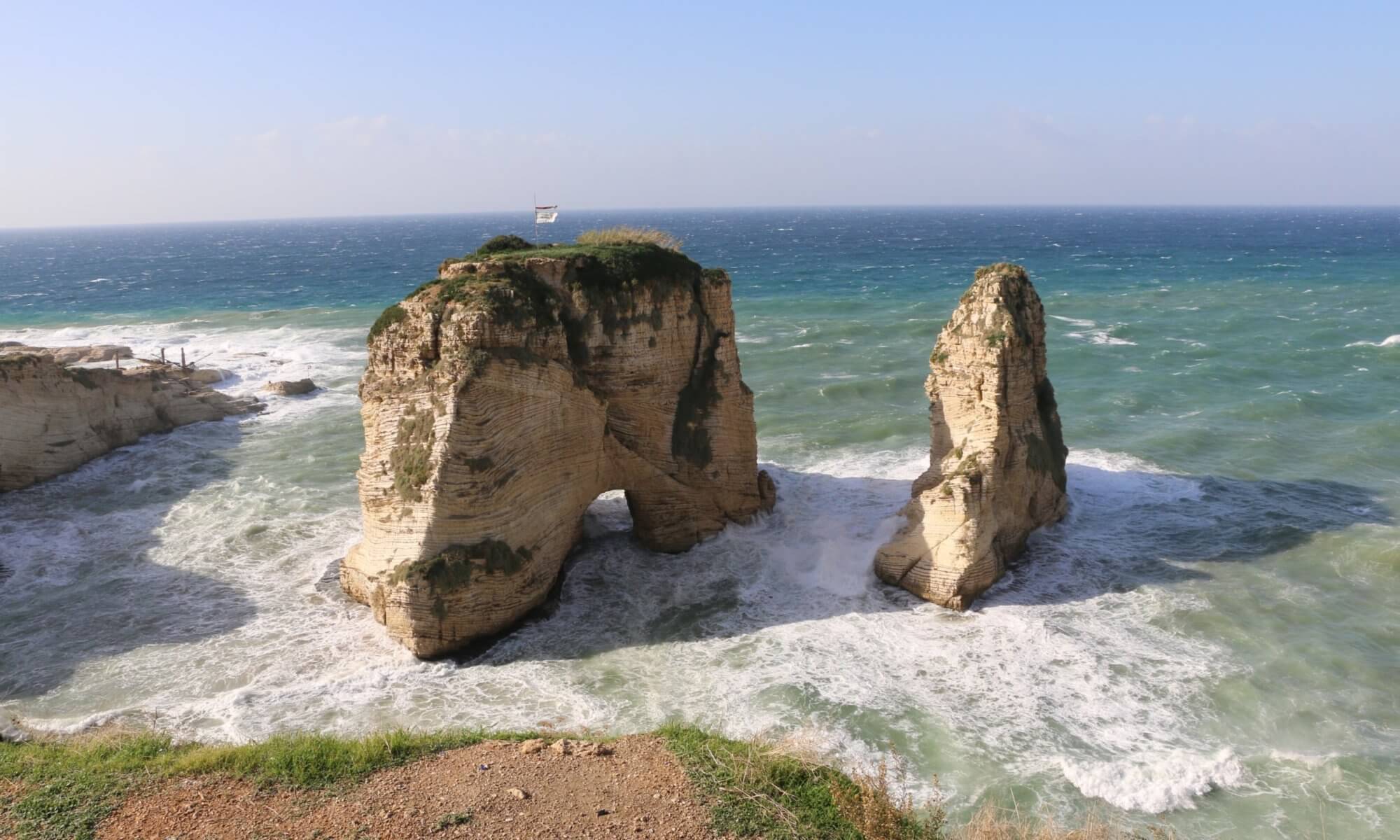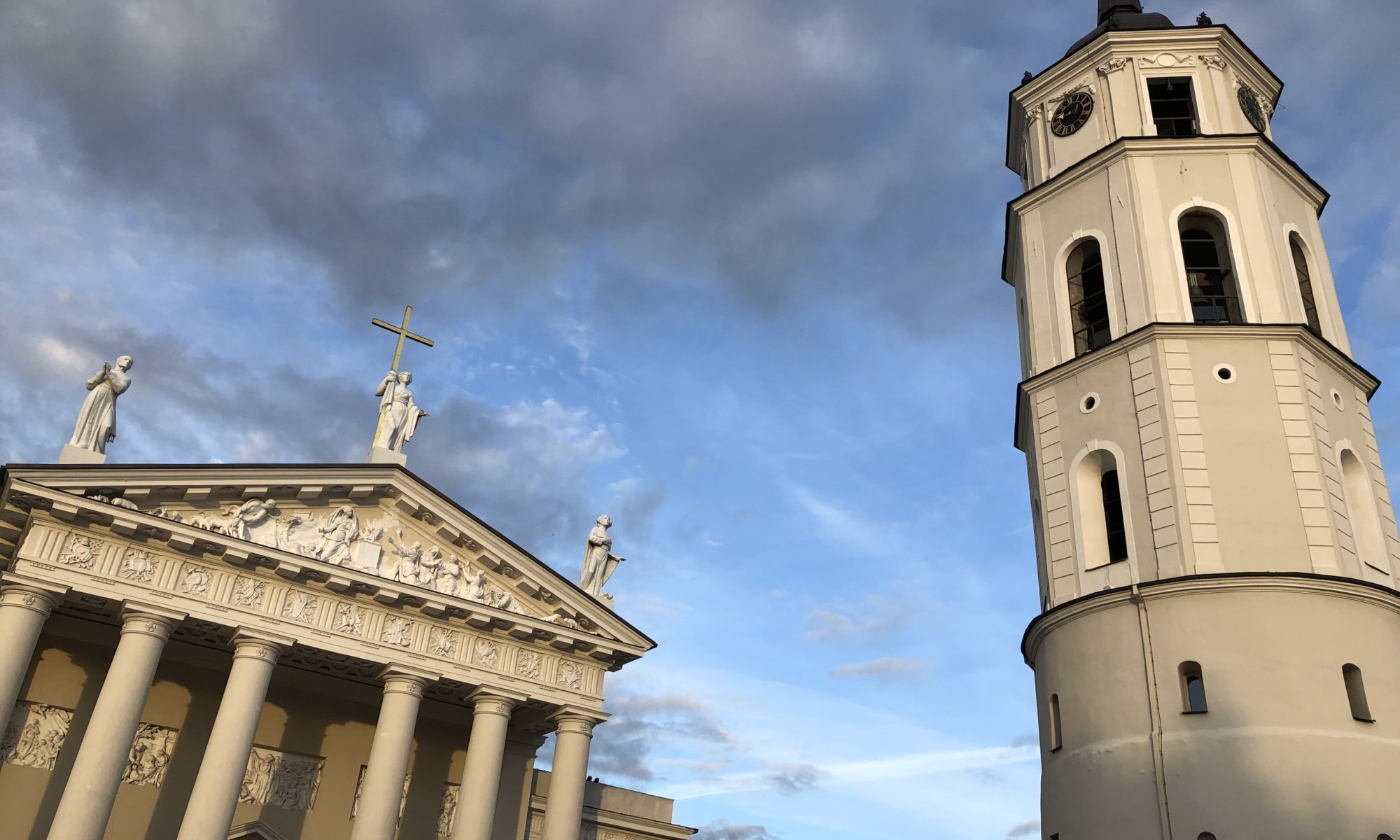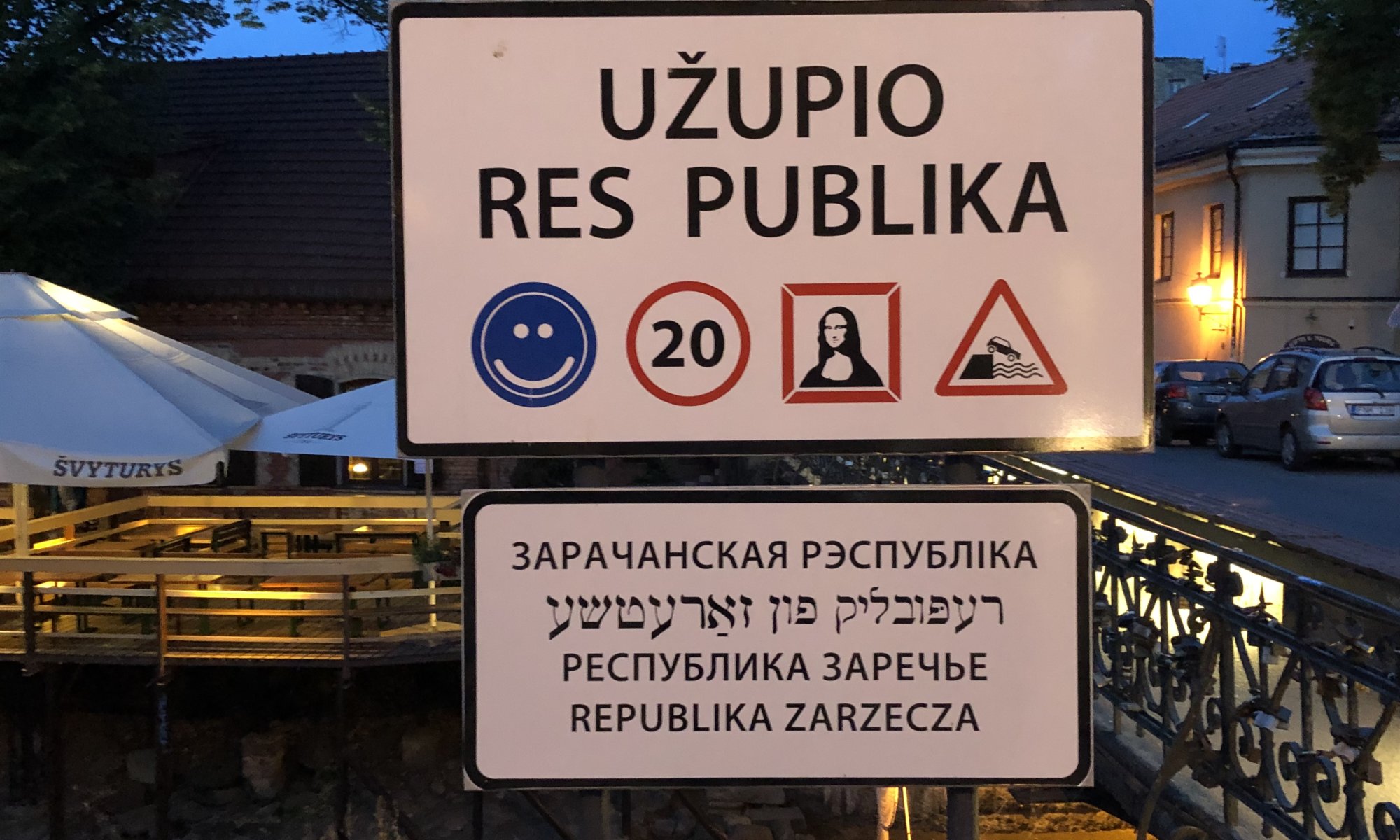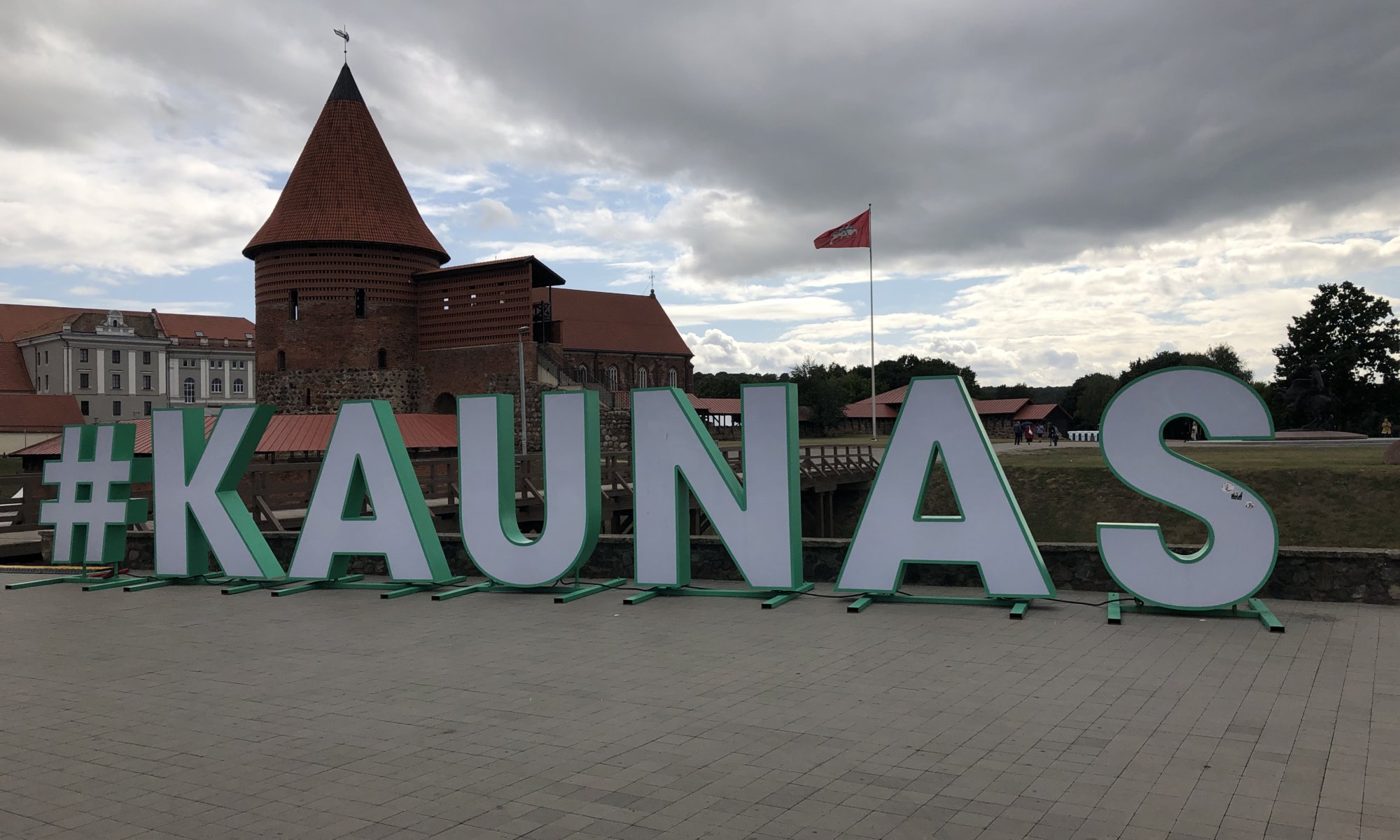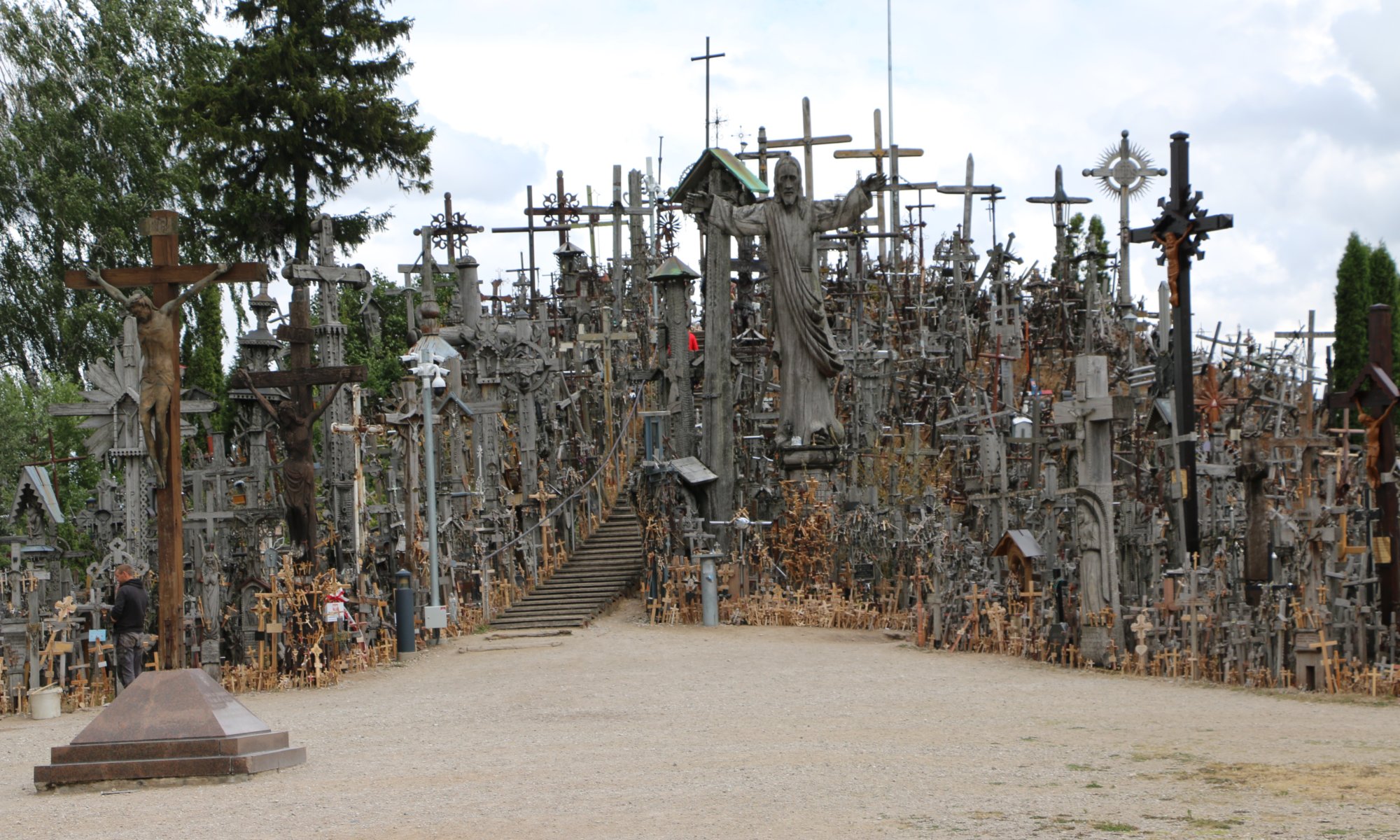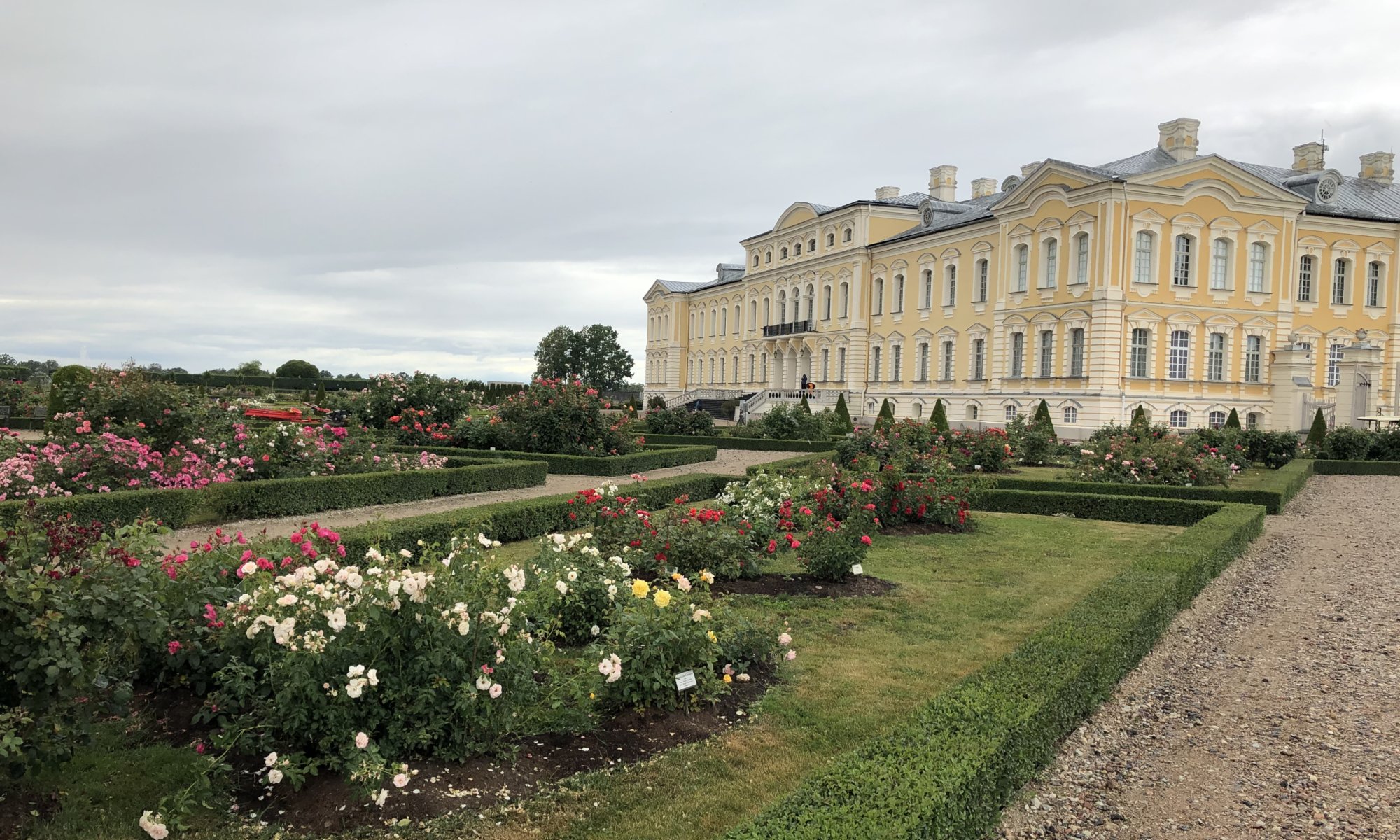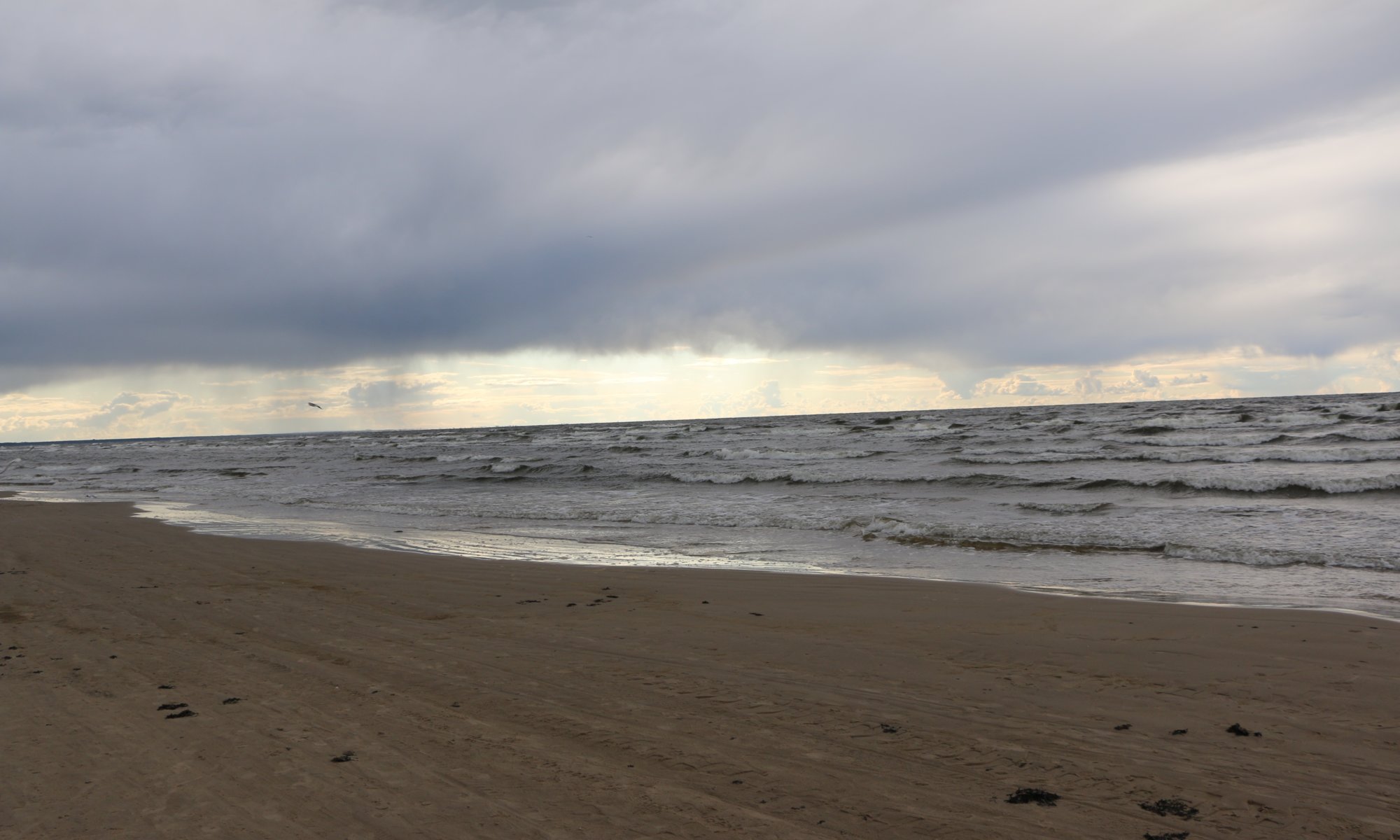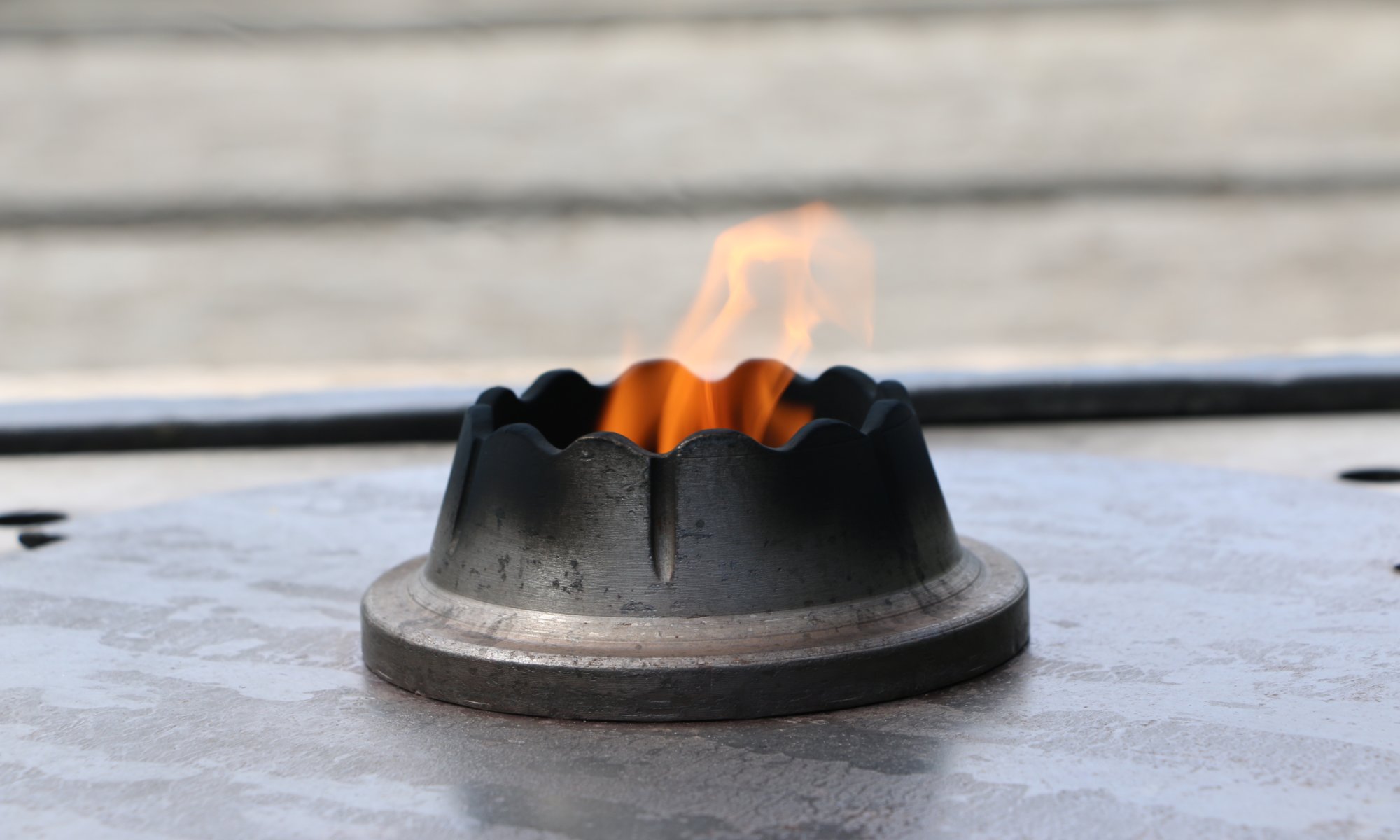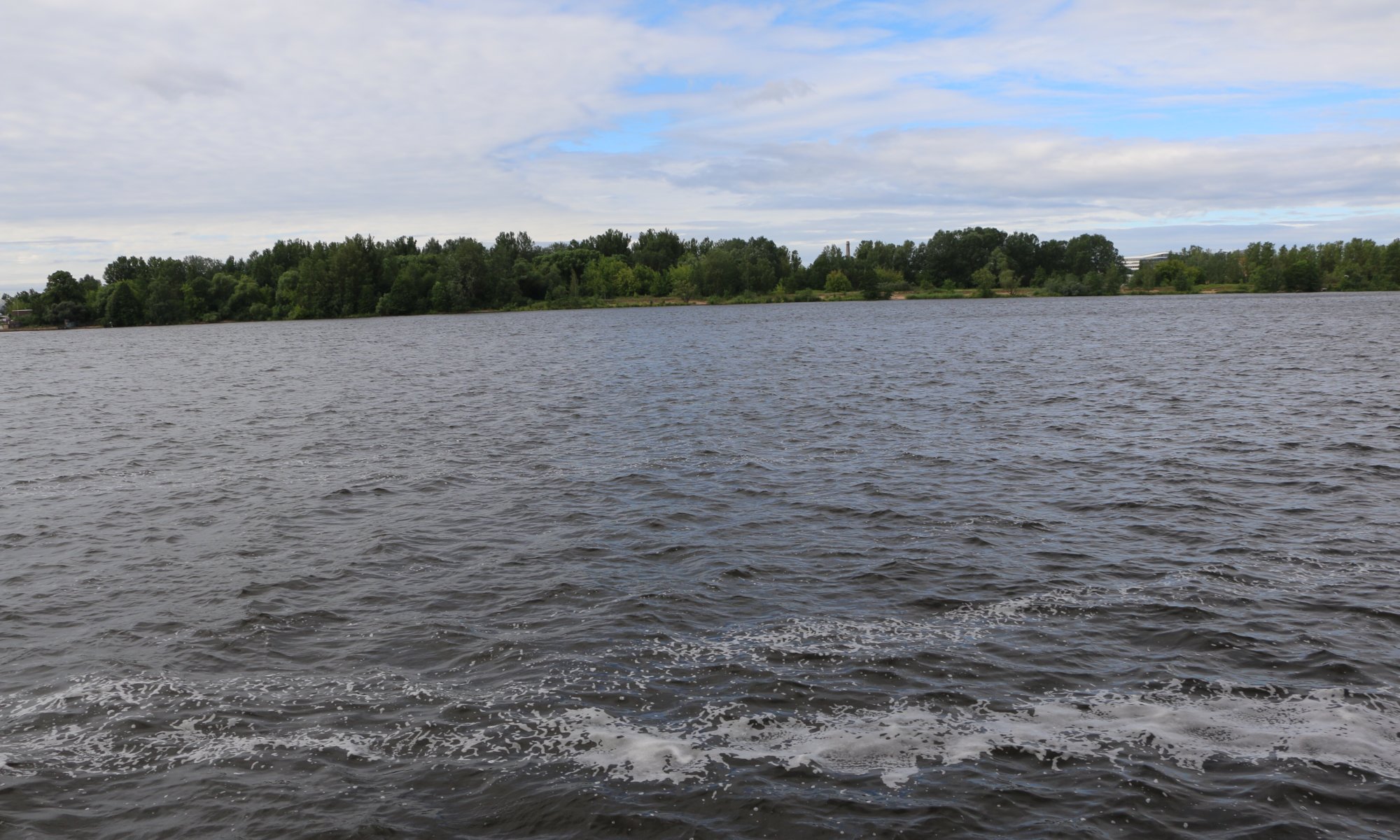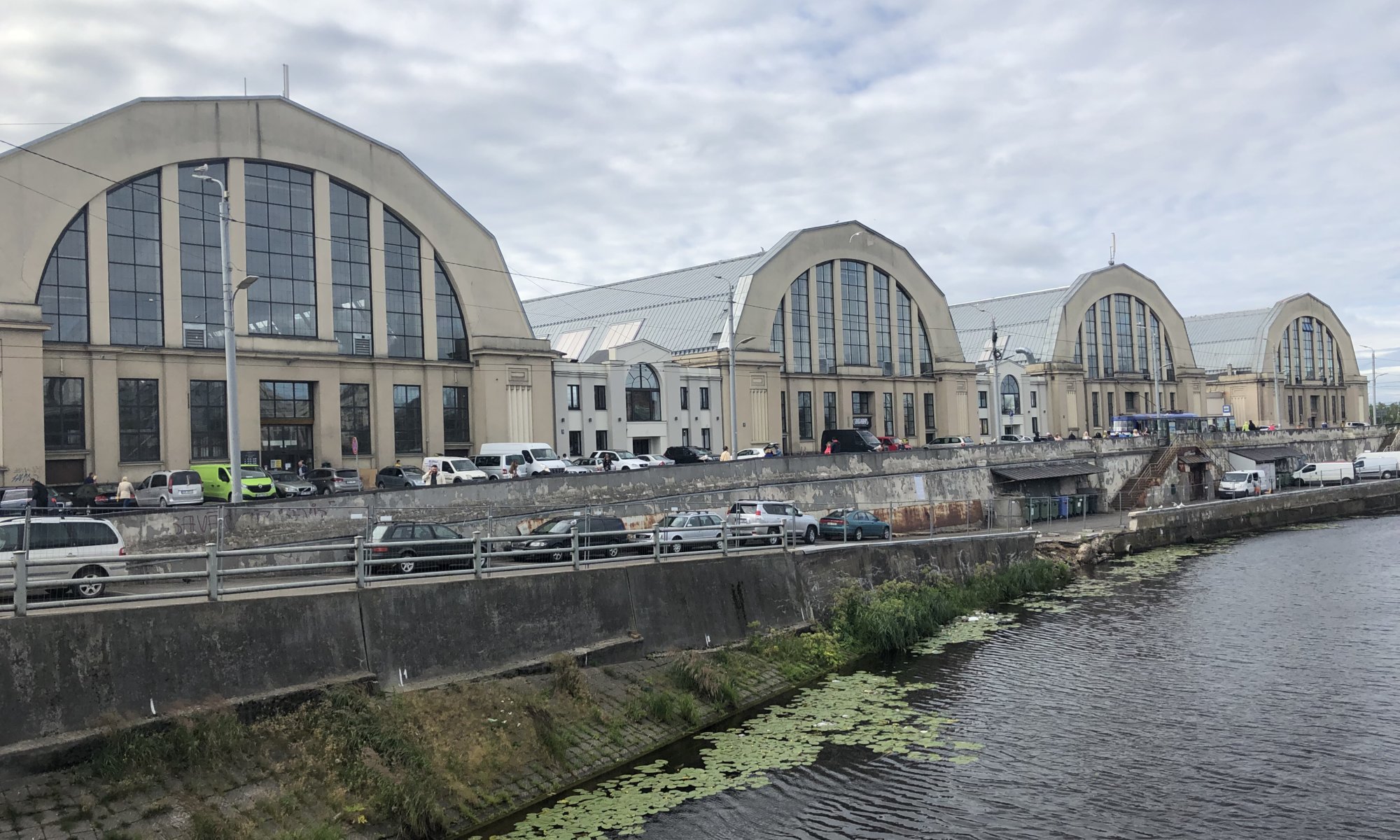The cathedral square is one of the most impressive public spaces in Vilnius, Lithuania. It is dominated by the Vilnius cathedral (Vilniaus Šv. vyskupo Stanislovo ir Šv. Vladislovo arkikatedra bazilika) in neoclassicistic style which was opened in 1801. The 52 meters high bell tower is standing separately next to the building – which is typical for churches in the Baltic area. It plays an important role in Lithuanian history as the Grand Dukes were crowned and important Lithuanian personalities are buried here.
Continue reading “Cathedral square”Užupio res publika
Užupis is a city quarter of Vilnius, Lithuania located in the east of the city center and surrounded by the river Vilnia (Užupis means ‘behind the river’). It was the place were the Jewish community was living that was extinguished during Holocaust. In the 1990s it became the place where many artists live and it was often compared to Montmartre at Paris, France.
Continue reading “Užupio res publika”Kaunas
Kaunas is the second largest city of Lithuania with around 300.000 inhabitants and is located at the confluence of the two rivers Nemunas and Neris. A castle at this place was first mentioned in the year 1361. It later became an important center of Jewish life in the region. When in 1920 Vilnius, the capital city of Lithuania became Polnish the city of Kaunas became provisory capital city until 1940.
Continue reading “Kaunas”Kryžių kalnas
The most famous place in rural Lithuana is the hill of crosses (Kryžių kalnas) near Šiauliai. It is a catholic place of pilgrimage that many tourists visit. Countless crosses are assembled on a ten meters high hill and you can walk on a wooden path between the more than 100.000 crosses – or buy one at the shop yourself and add it to the collection.
Continue reading “Kryžių kalnas”Rundāle palace
Somewhere in rural Latvia, not far away from the border to Lithuania you can find an impressive castle in baroque style: Rundāles pils, the Rundāle palace. It was designed with Versailles in mind and also has a french landscape garden – it is therefore often referred to as the Versailles of the Baltics. The palace was built between 1735 and 1740 by the order of empress Anna of Russia.
Continue reading “Rundāle palace”Aiz šiem vārtiem vaid zeme
In 1941 Latvia was occupied by Nazi Germany and a forced labour camp was created at Salaspils – 18 kilometers south of Rīga. Captives were intended to do peat cutting and the Nazis wanted to detain Jewish people here. The camp was built by Soviet prisoners of war and Jews mostly from the ghetto of Rīga – and it was used mostly for political prisoners and deserted soldiers. But what really happened here remains unclear because of insufficient research and political motives.
Continue reading “Aiz šiem vārtiem vaid zeme”Majori
If you’re at Rīga, Latvia and want to see the Baltic sea you need to travel a bit. In contrast to Tallinn, Estonia the city center is some kilometers afar from the shore. The best place for that is the city of Jūrmala and the most famous place there along the shore is Majori (in German ‘Majorenhof‘). It is located on a languet between the Baltic sea and the river Lielupe which forms a beautiful landscape.
Continue reading “Majori”Brāļu kapi
The brothers’ cemetery (Brāļu kapi) at Rīga, Latvia is a fascinating memorial for the soldiers of World War I and the Latvian independence war between 1950 and 1920. It was created between 1924 and 1936 and was designed by Kārlis Zāle who also created the freedom monument. The memorial is located in the north of the city centre in a vast complex of different cemeteries.
Continue reading “Brāļu kapi”Daugava
When you’re at Rīga, Latvia you will experience the Daugava river as a mighty and wide stream located near the city center and dividing the old town from the newer parts of the city. You need to cross it to go to the airport, the botanical garden or – by train – if you want to visit Jūrmala. The river is 1020 kilometers long, begins in Russia and passes through Belorussia and Latvia to the gulf of Rīga where it floats into the Baltic sea.
Continue reading “Daugava”Centrāltirgus
The central market (Centrāltirgus) of Rīga, Latvia is located directly next to the bus station and not far away from the railway station. You can’t miss it because it is located within iconic buildings once used to built airships. On 72.000 squaremeters you can buy fruit, cheese, meat, fish, flowers and more. The market plays an important role in everyday life and I’ve never seen so many people accessing a market.
Continue reading “Centrāltirgus”